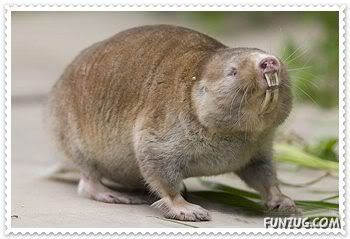 Mole-Rats aren't Blind
Mole-Rats aren't Blind With their puny eyes and underground lifestyle, African mole-rats have long been considered the Mr. Magoos of rodents, detecting little light and, it has been suggested, using their eyes more for sensing changes in air currents than for actual vision. But findings of the past few years have shown that African mole-rats have a keen, if limited, sense of sight. And they don't like what they see, according to a report in the November 2006 Animal Behaviour. Light may suggest that a predator has broken into a tunnel, which could explain why subterranean diggers developed sight in the first place.
 IMAGE CORNER
IMAGE CORNER Wallpapers/Cool Images
Wallpapers/Cool Images Animals and Wildlife
Animals and Wildlife 10 Interesting Facts You Didn't Know about Animals
10 Interesting Facts You Didn't Know about Animals IMAGE CORNER
IMAGE CORNER Wallpapers/Cool Images
Wallpapers/Cool Images Animals and Wildlife
Animals and Wildlife 10 Interesting Facts You Didn't Know about Animals
10 Interesting Facts You Didn't Know about Animals
